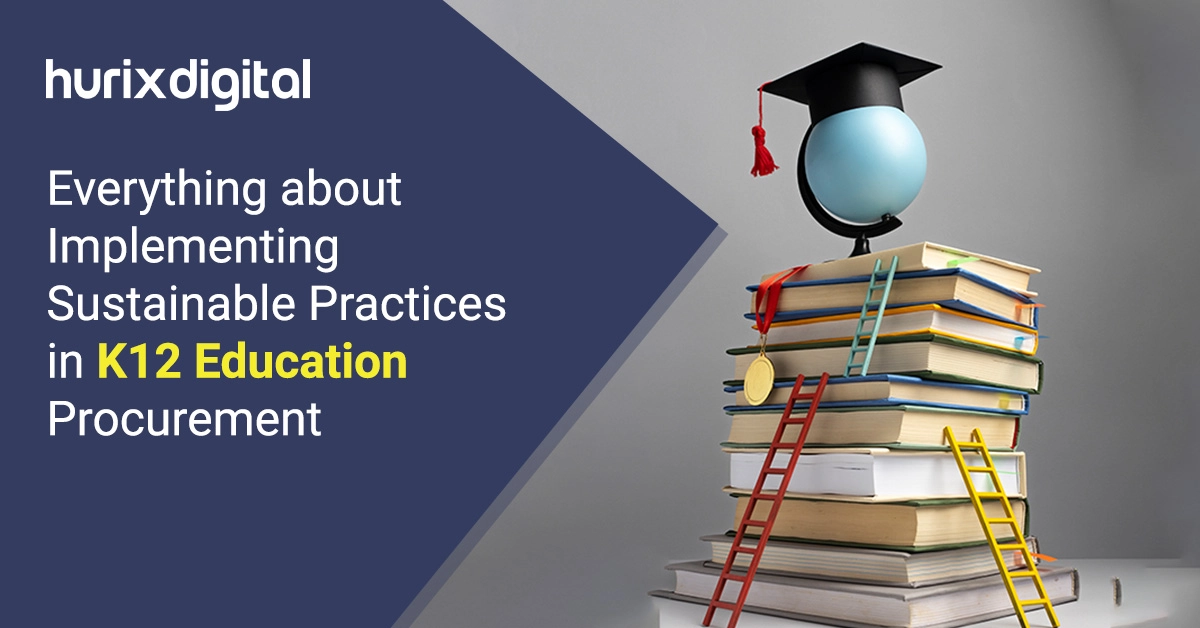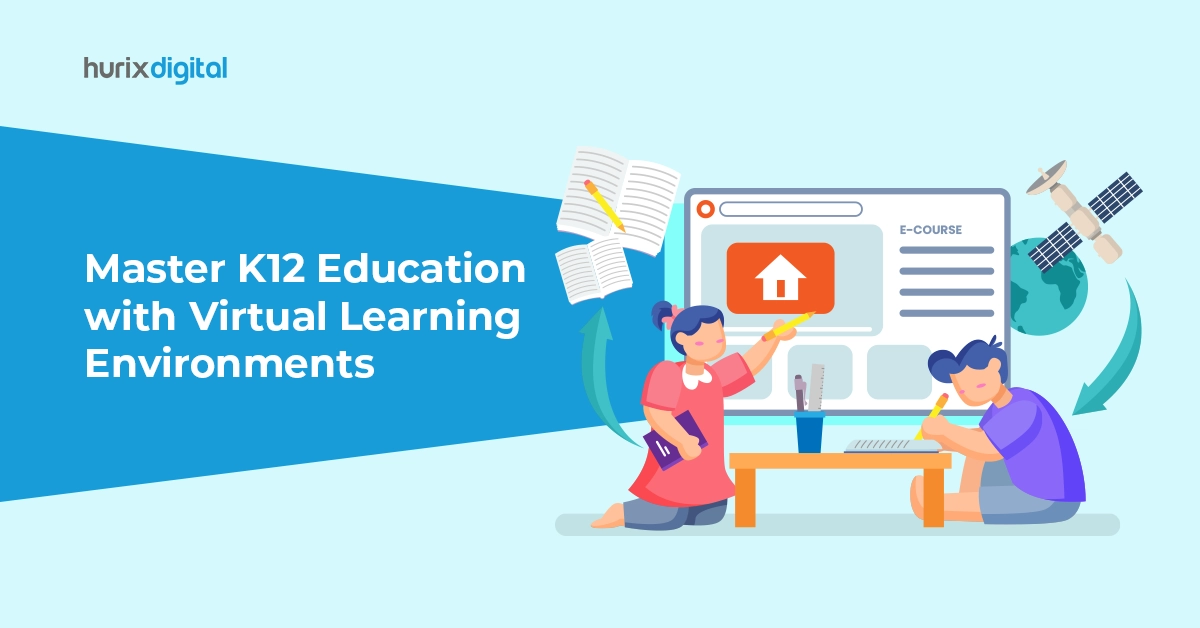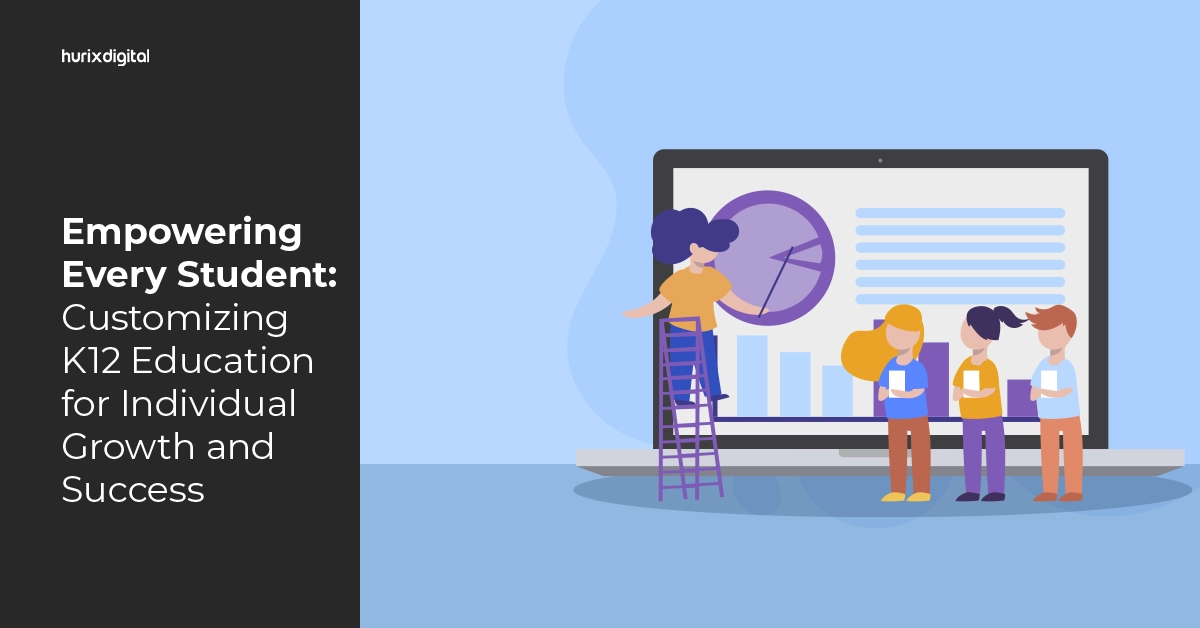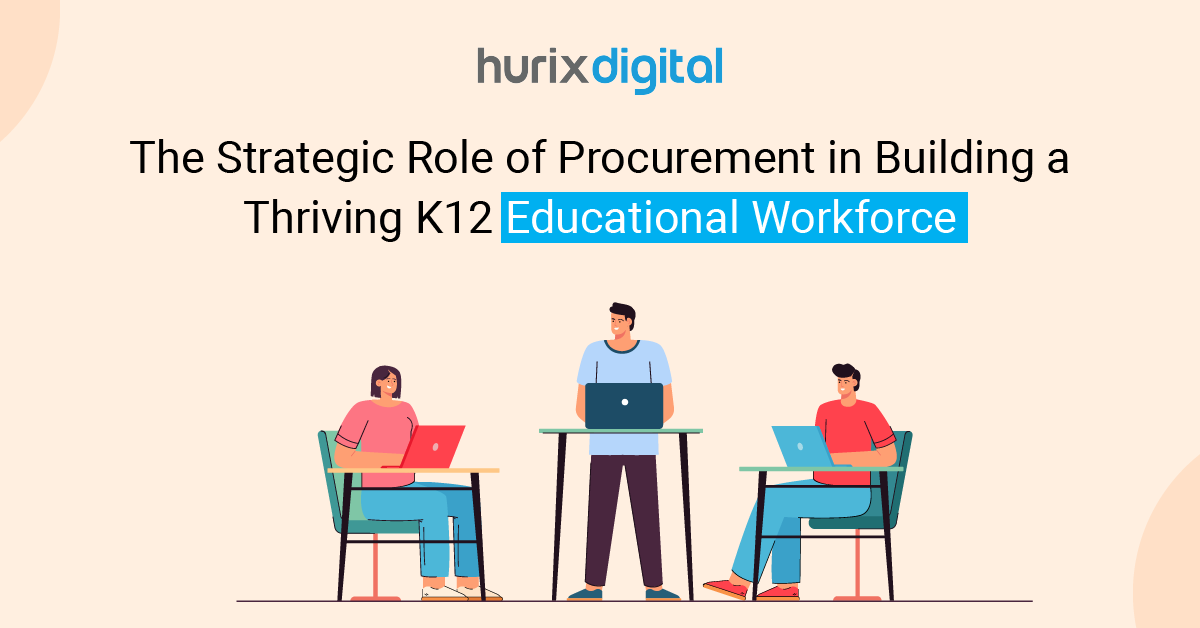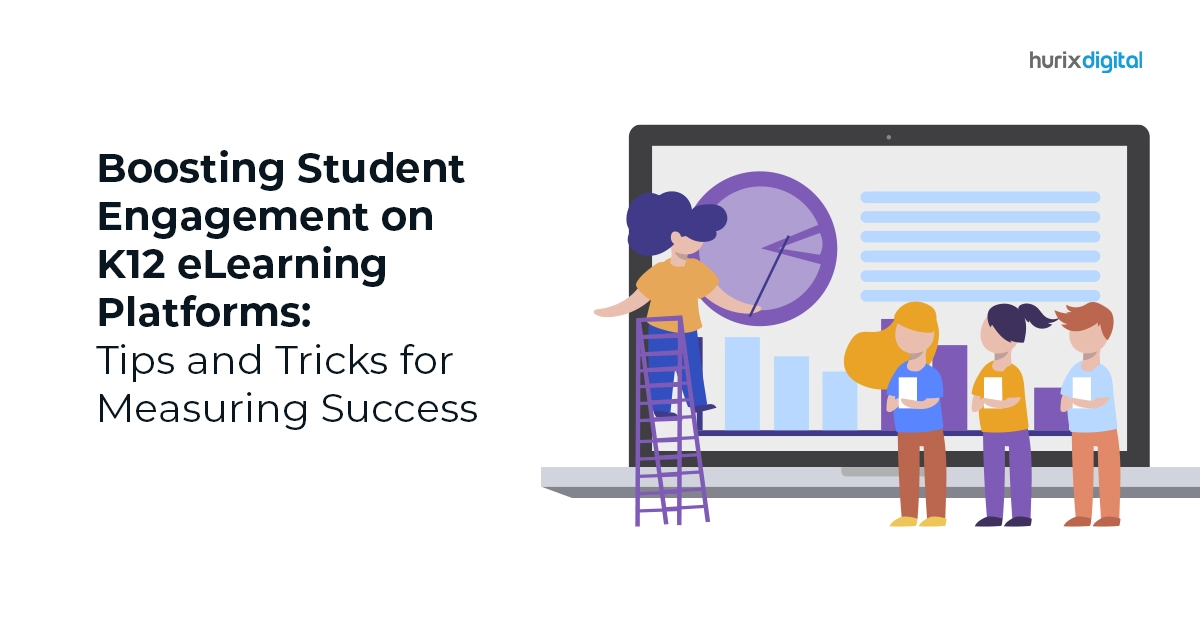
Boosting Student Engagement on K12 eLearning Platforms: Tips and Tricks for Measuring Success
Summary
Explore tips for increasing student engagement on eLearning platforms. This article provides strategies and methods for measuring and enhancing engagement in online learning.
The global K12 eLearning market is thriving due to the introduction of cutting-edge technological advancements and interactive learning frameworks. With a predicted value of $103.5 billion in 2021 and a compound annual growth rate (CAGR) of 17.7% from 2022 to 2031, the worldwide K12 education industry is expected to reach $525.7 billion by 2031.
This statistical data is suggestive of the evolving growth and demand for K12 virtual learning platforms. However, merely using the EdTech solutions does not guarantee success. You need to monitor the success rate to bridge the gap in learning outcomes.
This blog outlines various tips and tricks for measuring the performance of K12 eLearning platforms to boost student engagement and productivity.
Table of Contents:
- What are K12 eLearning Platforms?
- Tips to Assess the Rate of Student Engagement in K12 eLearning Platforms
- How to Boost K12 Digital Classroom Success?
- Takeaway
What are K12 eLearning Platforms?
K12 eLearning platforms are an extensive set of interactive digital services that offer knowledge, instruments, and assistance to educators, trainees, and other stakeholders to assist and improve the management and execution of better learning outcomes.
K12 learning solutions are materials designed for elementary to grade 12. In the digital age, K12 educational options typically include online resources that are frequently used to enhance in-person instruction.
Online learning resources for grades K12 possess multiple advantages. Some of these are:
- Audio and video resources are added to text comprehension to enhance the learning experience and pique students’ interests.
- These courses could take the shape of simulations with incorporated learning objectives with stages and difficulties.
Additionally, teachers also benefit from the K12 eLearning best practices because they don’t have to invest all their time in designing instructional resources. By doing so, more time may be wisely allocated to providing each student with a more individualized focus.
Additionally, these systems give teachers access to online tracking, evaluation, and interactive instructional resources.
Also Read: Faces of AI in EdTech – From Virtual Tutors to Adaptive Learning
Tips to Assess the Rate of Student Engagement in K12 eLearning Platforms
The term “student engagement” describes how motivated, interested, and involved students are in the subject matter, as well as how they communicate with the teacher, other peers, and the material. Student engagement is critical to measuring eLearning success because it has an impact on retention, fulfillment, and proficiency.
Here are the effective tips you can use for assessing student engagement in K12 eLearning platforms:
1. Set Well-Defined Objectives of Study
Determining and coordinating the learning objectives of the course with the requirements of the students and curriculum guidelines is one of the initial steps in assessing the effectiveness of online education for K–12. The precise and quantifiable results that learners are expected to attain by the conclusion of the course are known as learning objectives.
These objectives should direct the creation and dissemination of the course material, tasks, and assessments. They should also be specific, pertinent, and easy to acquire.
You can assess whether the curriculum fulfills the standards and prerequisites of the topic and level of study, as well as if learners are progressing and acquiring the skills and expertise, by setting out specific learning goals.
2. Monitor Student Performance through Varied Metrics
You can employ a variety of metrics, including duration of the course, degree of completion, feedback, involvement, and participation, to gauge student engagement. To find out how the students feel regarding the course, you may additionally utilize discussions, polls, questionnaires, and assessments.
Metrics such as submission rates, hours spent on assignments, finished modules, login frequency, and grades can provide us with a general idea of how engaged a learner is with K12 eLearning platforms. But keep in mind that when analyzing these metrics, the human element cannot be overlooked.
3. Gauge the Learning Outcomes through Standard Assessments
Learning outcomes, which arise from the educational goals, are the discernible and established outcomes that demonstrate what the students have comprehended and can accomplish after the course. They must also be consistent with the assessment techniques and standards.
A variety of assessments can be in the form of formative, summative, performance-driven, and portfolio-based ones. These assessments are:
- Diagnostic assessment– There are diagnostic tests at the start of the curriculum. Their purpose is to determine the student’s level of expertise so the teacher can assign them to the most appropriate learning trajectory.
- Formative assessment– Formative evaluations track students’ knowledge and development over an online program or the academic year. Providing thorough feedback to students following a formative assessment is crucial to assisting them in identifying their areas of potential and limitations.
- Summative assessment– Summative evaluations of pupil achievement are given at the middle and end of terms. Students receive a grade determined by how well they perform, which is evaluated according to predetermined standards.
4. Use Effective and Advanced Tools
You must gather and combine data from several sources, including the learning management system (LMS), the web data analysis tool, and the evaluation tool, to calculate engagement metrics.
In addition to making sure you have the required authorizations and legal safeguards in place to use the data, you should also make sure it is unbiased, precise, and accurate. To make data organization and analysis easier, you must additionally employ standard protocols and formats.
After comparing the data to your requirements and goals, you should find any gaps and areas that could use improvement. Additionally, you should share the outcomes with the stakeholders and students and offer them suggestions and practical insights.
How to Boost K12 Digital Classroom Success?
Student engagement strategies imply how engaged, focused, and interested students are in the process of learning. Monitoring certain factors provides insightful information that can be utilized to improve learning outcomes, modify the course material, and adapt teaching strategies.
The following are some useful tactics to enhance students’ participation in online learning:
- Make the eLearning content interactive and captivating by including engaging quizzes, animations, and video content.
- Make the educational process unique and personalized to cater to the demands of varied students by using interactive eLearning tools. Permit students to tailor their educational journey according to their inclinations and passions.
- Offer a range of auxiliary materials. Provide students with online discussion boards, supportive peer groups, and tutoring when they require it.
- To make learning enjoyable and interesting, apply gamification in eLearning. You can include leaderboards, points, and badges to motivate students.
- Summative and formative evaluations should be used to track growth and accomplishment and give prompt feedback.
- In addition to seeking recognition from outside sources and reviewing and improving course design and delivery, using a recognized quality assurance structure or model can be beneficial.
- Identifying shortcomings and strengths can be aided by data-driven choices, and intuitive, reliable online platforms and tools can be employed.
Check out EXCLUSIVE: Hurix Minibook: Immersive Learning for the WIN in Education!
Takeaway
The assessment of eLearning program effectiveness is a continuous process aimed at achieving perfection in the constantly evolving field of K12 eLearning platforms. These excellent practices guarantee the accomplishment of learning goals, student participation, and ongoing development.
To modify programs and enhance learning, pupils must discover novel possibilities for development, which is why eLearning functions best when continuously assessed.
If you are looking for more evaluative tools and EdTech solutions, Hurix Digital is the perfect partner for you! We create custom content that meets your educational objectives and boosts student achievement thanks to our innovative approach to instructional design.
Get in touch with us to know more!

Senior Vice President – Business Development
Over 25 years of experience in the edtech and workforce learning industry with strong skills in Business Development, Customer Relationship Management (CRM) and Strategy.
